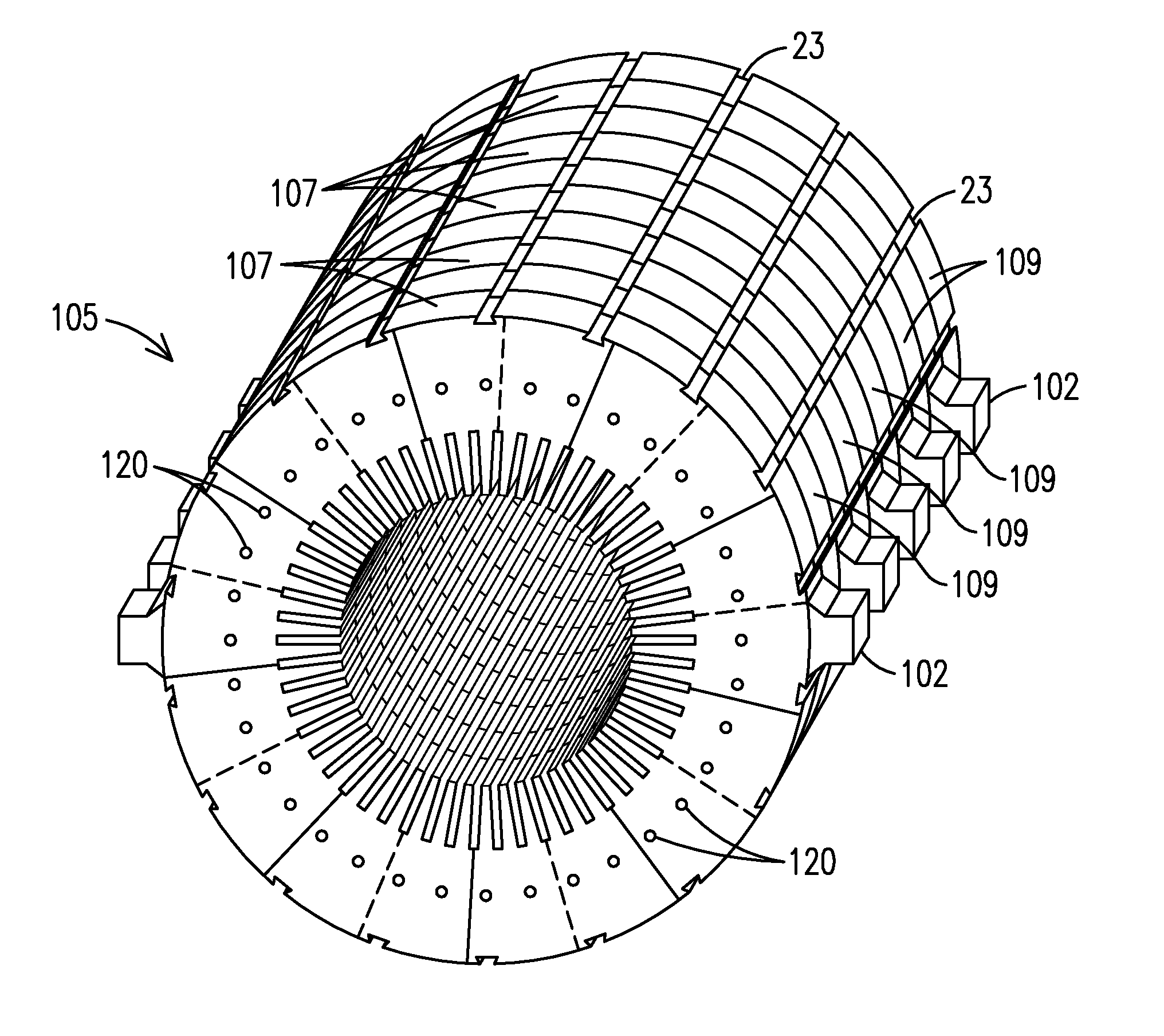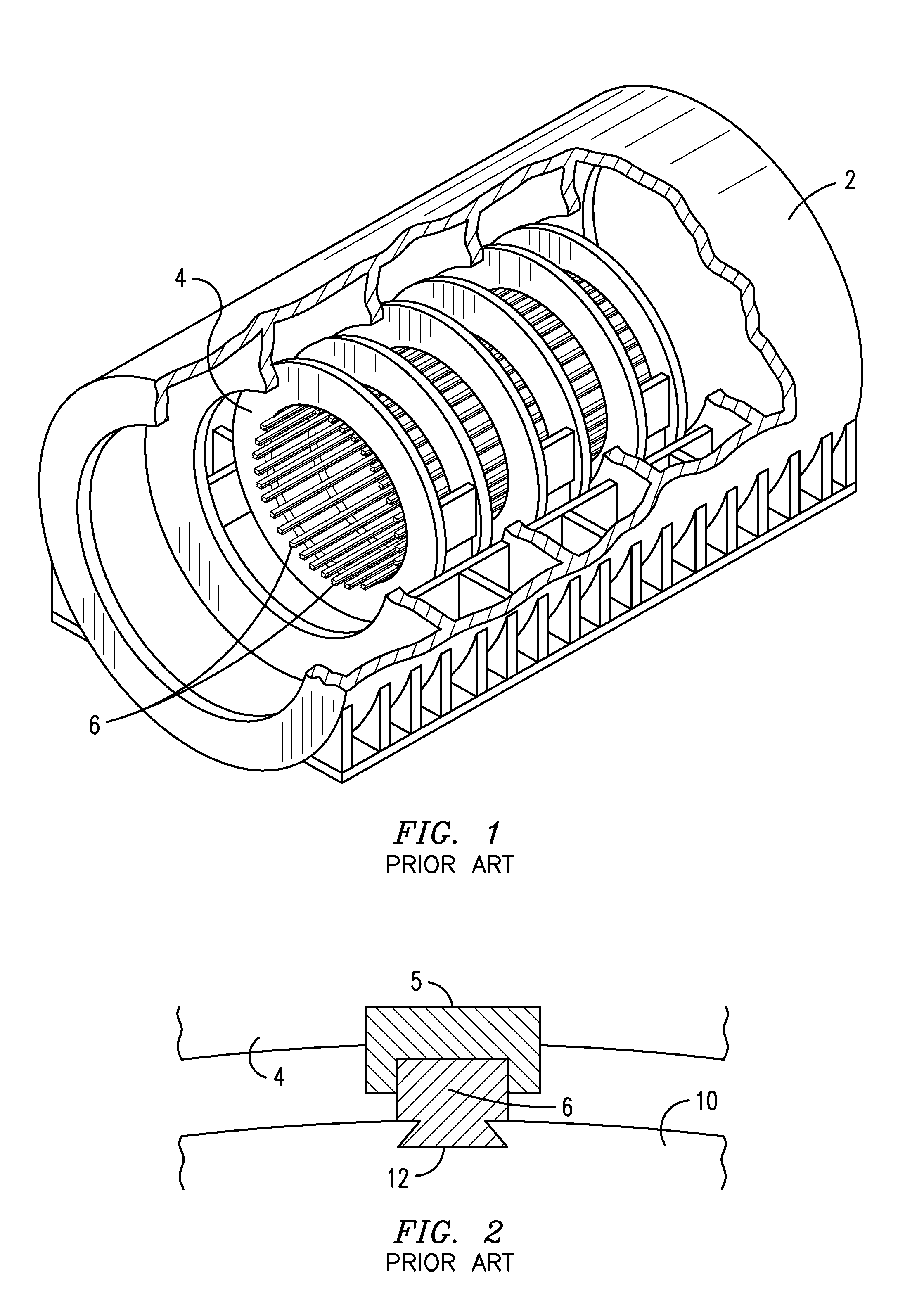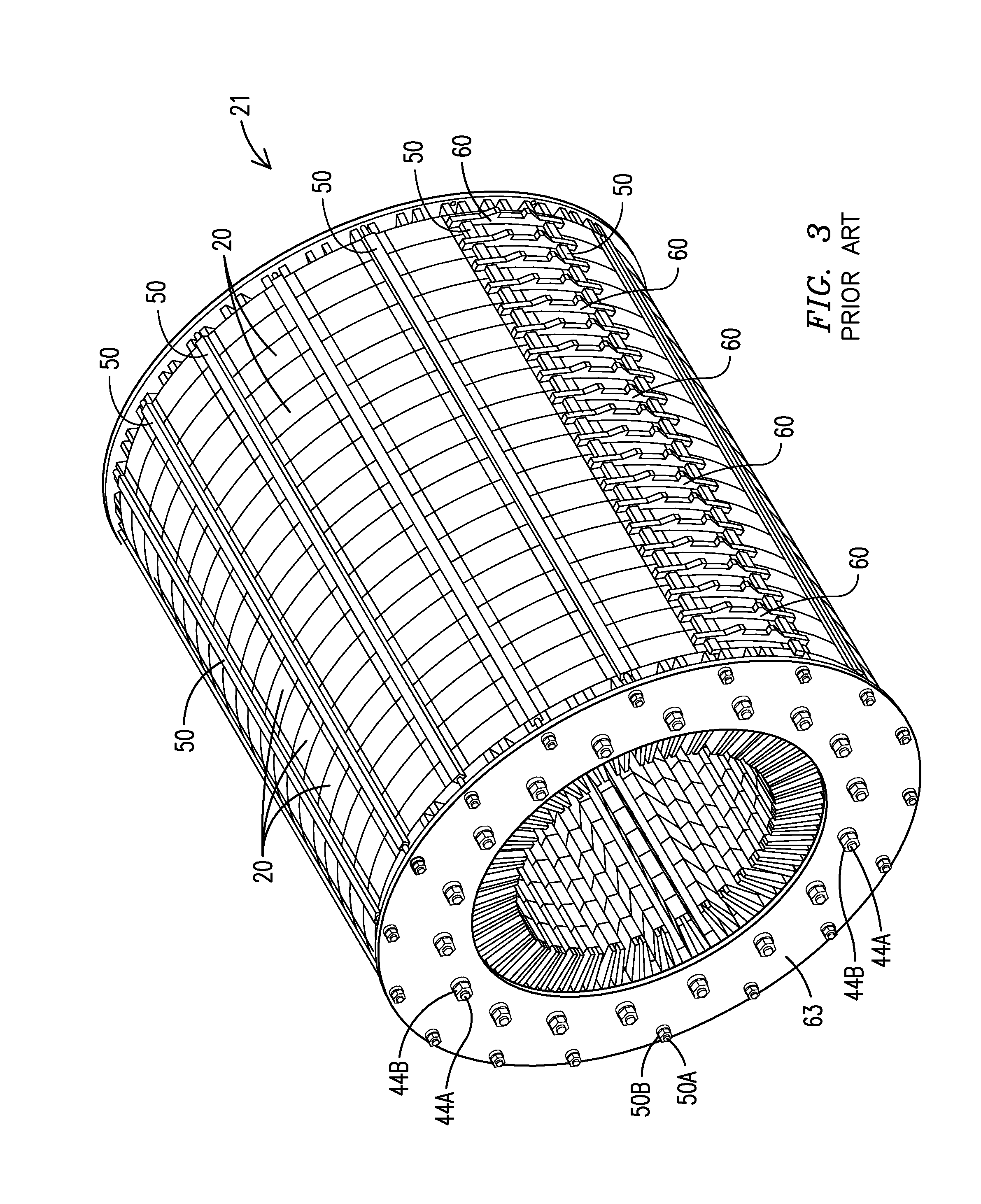Turbine generator stator core attachment technique
a technology for stator cores and generators, applied in the direction of dynamo-electric machines, electrical equipment, magnetic circuit shapes/forms/construction, etc., can solve the problems of rotors and/or frames, premature failure of generators, and lamination of vibrating vibrations
- Summary
- Abstract
- Description
- Claims
- Application Information
AI Technical Summary
Benefits of technology
Problems solved by technology
Method used
Image
Examples
Embodiment Construction
[0032]Stator core laminations are punched from electrical steel sheet. A single typical lamination comprises nine segments (or nine punchings) and thus nine punching operations (also referred to as stamping operations) are required to form the nine segments. A single punching die is used to punch the nine segments for a stator core of a given size and shape. Additional dies are utilized to punch the laminations for differently sized stator cores, where the core size depends on the power rating and size of the generator. This technique is especially valuable and efficient when a large number of identical punchings are required.
[0033]Today, most punchings are formed by a laser cutting operation. A cutting die is not required as the laser cutting process is controlled by a software program controlling a multi-axis laser cutter.
[0034]The present invention teaches core laminations having at least two tabs extending from a circumferential edge of the lamination. Preferably, the two tabs a...
PUM
 Login to View More
Login to View More Abstract
Description
Claims
Application Information
 Login to View More
Login to View More - R&D
- Intellectual Property
- Life Sciences
- Materials
- Tech Scout
- Unparalleled Data Quality
- Higher Quality Content
- 60% Fewer Hallucinations
Browse by: Latest US Patents, China's latest patents, Technical Efficacy Thesaurus, Application Domain, Technology Topic, Popular Technical Reports.
© 2025 PatSnap. All rights reserved.Legal|Privacy policy|Modern Slavery Act Transparency Statement|Sitemap|About US| Contact US: help@patsnap.com



